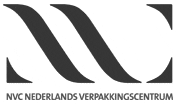Consumenten tonen geen grote weerstand tegen nanosensors
Researchers at the University of Stirling in Scotland UK examined consumers' preferences for chickens under different levels of foodborne health risk, animal welfare and price attributes. They compared risk reductions achieved by conventional improvements in the supply chain and risk reductions achieved by food packaging nanosensors. They found that consumers, on average, prefer raw, whole chicken with a lower risk of food poisoning, better animal welfare, and lower costs, regardless of the presence of nanosensors. In general, consumers showed no strong preferences towards or resistance to nanotechnology. An article about the research is published in the Journal of Agricultural Economics.
Klik hier voor een samenvatting van het artikel.
Dit bericht is ook opgenomen in ons maandelijkse overzicht, de NVC Members-only Update. Heeft u vragen, neem dan contact met ons op via e-mail of bel: +31-(0)182-512411.

